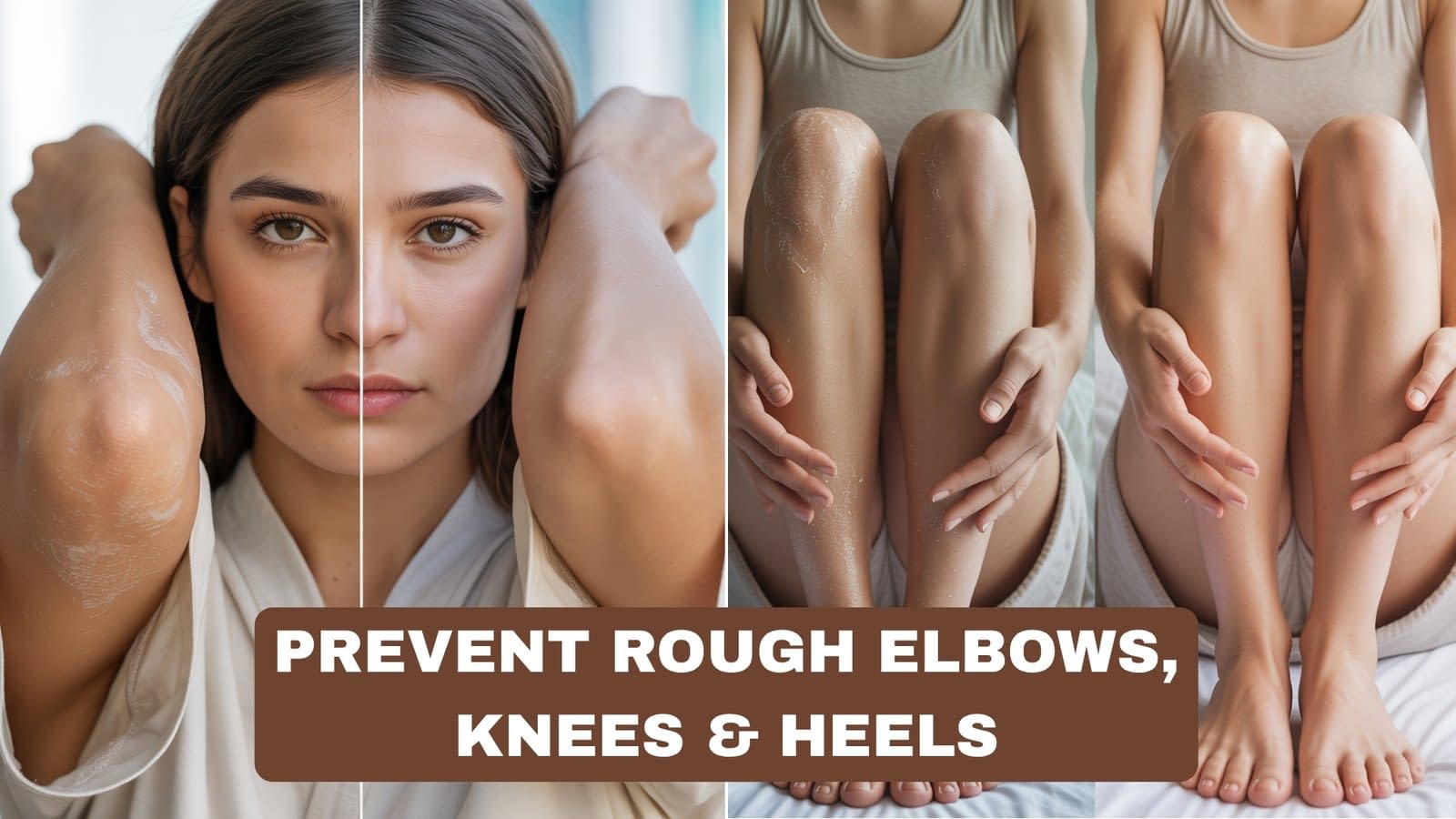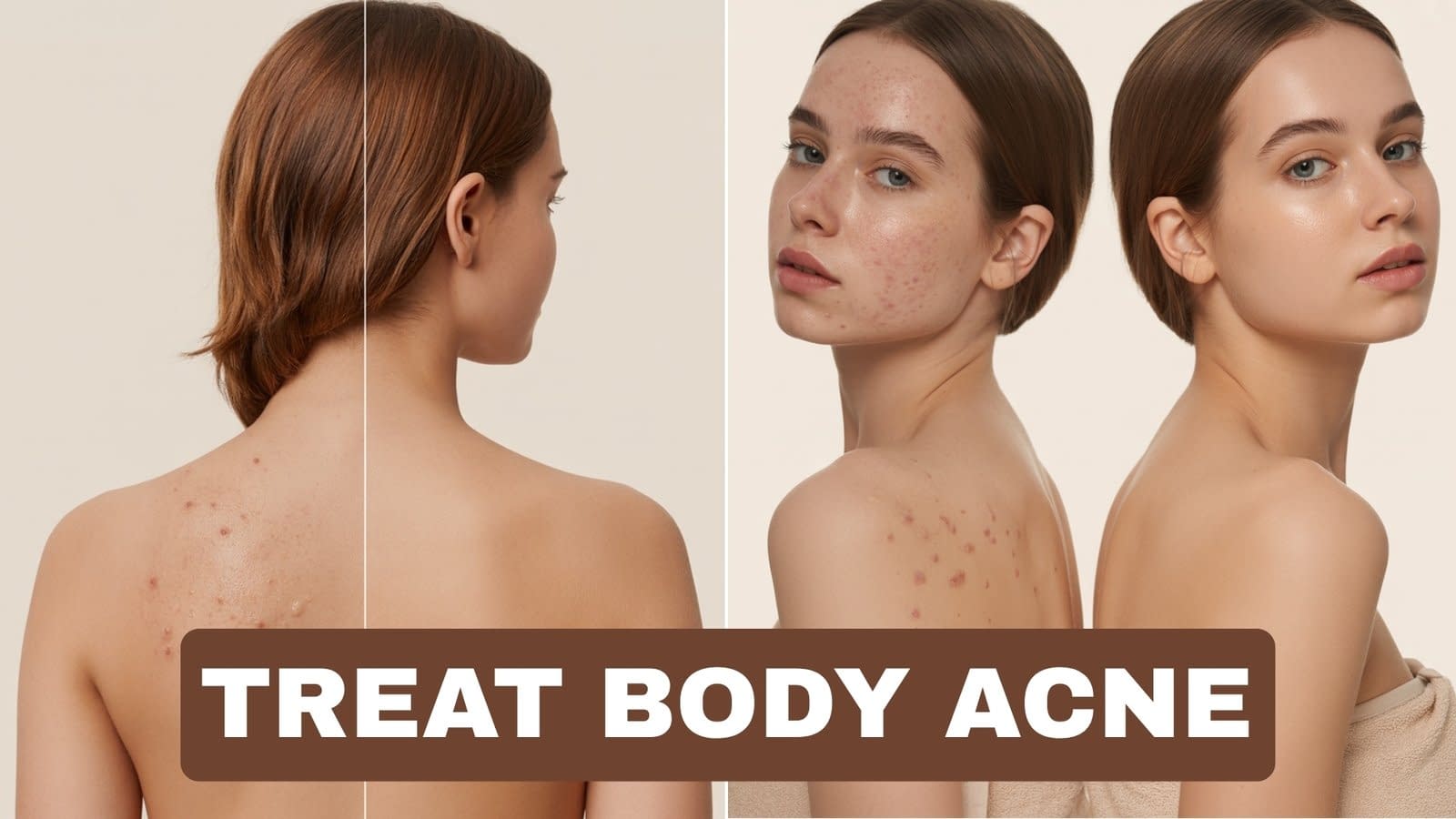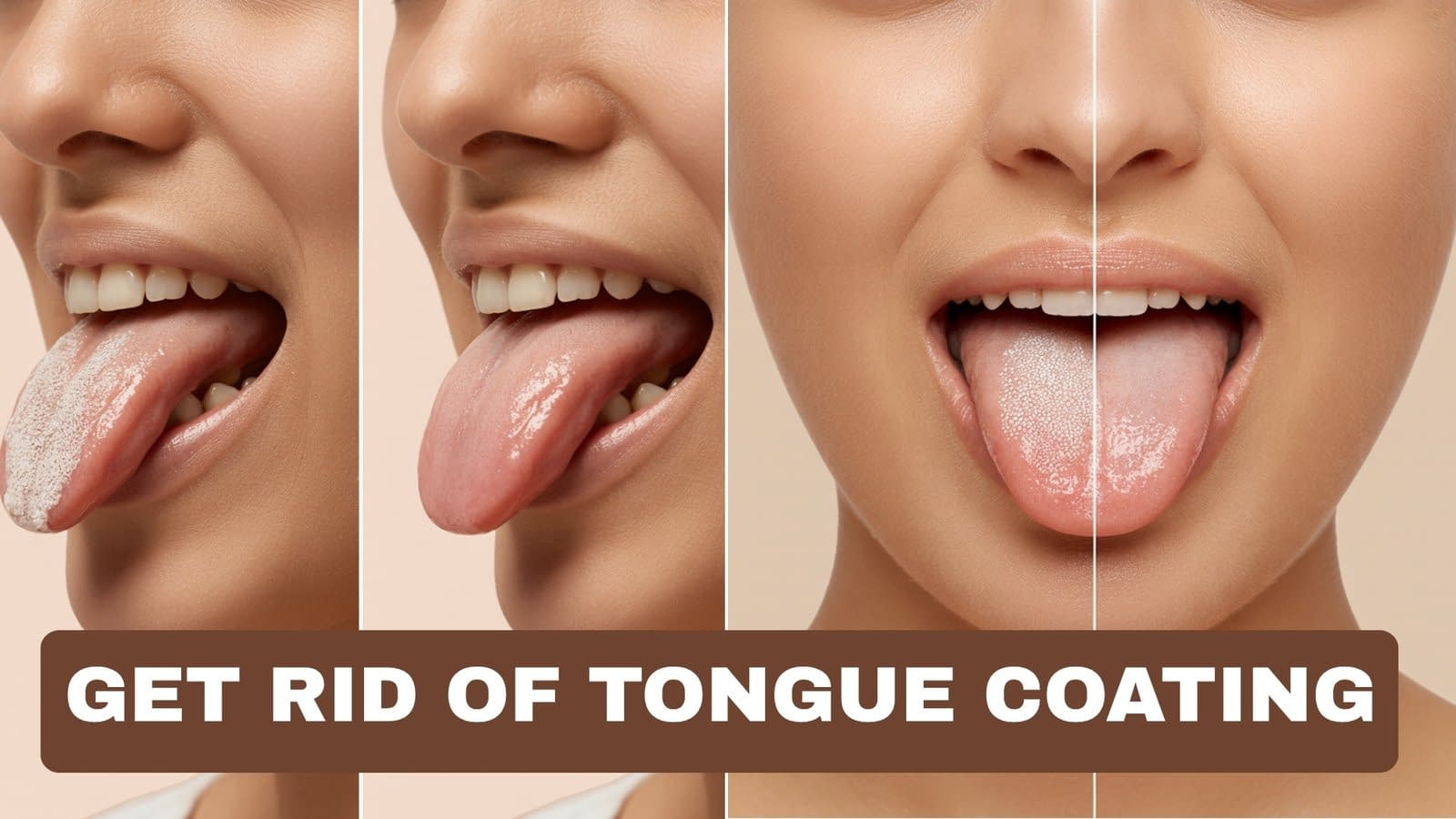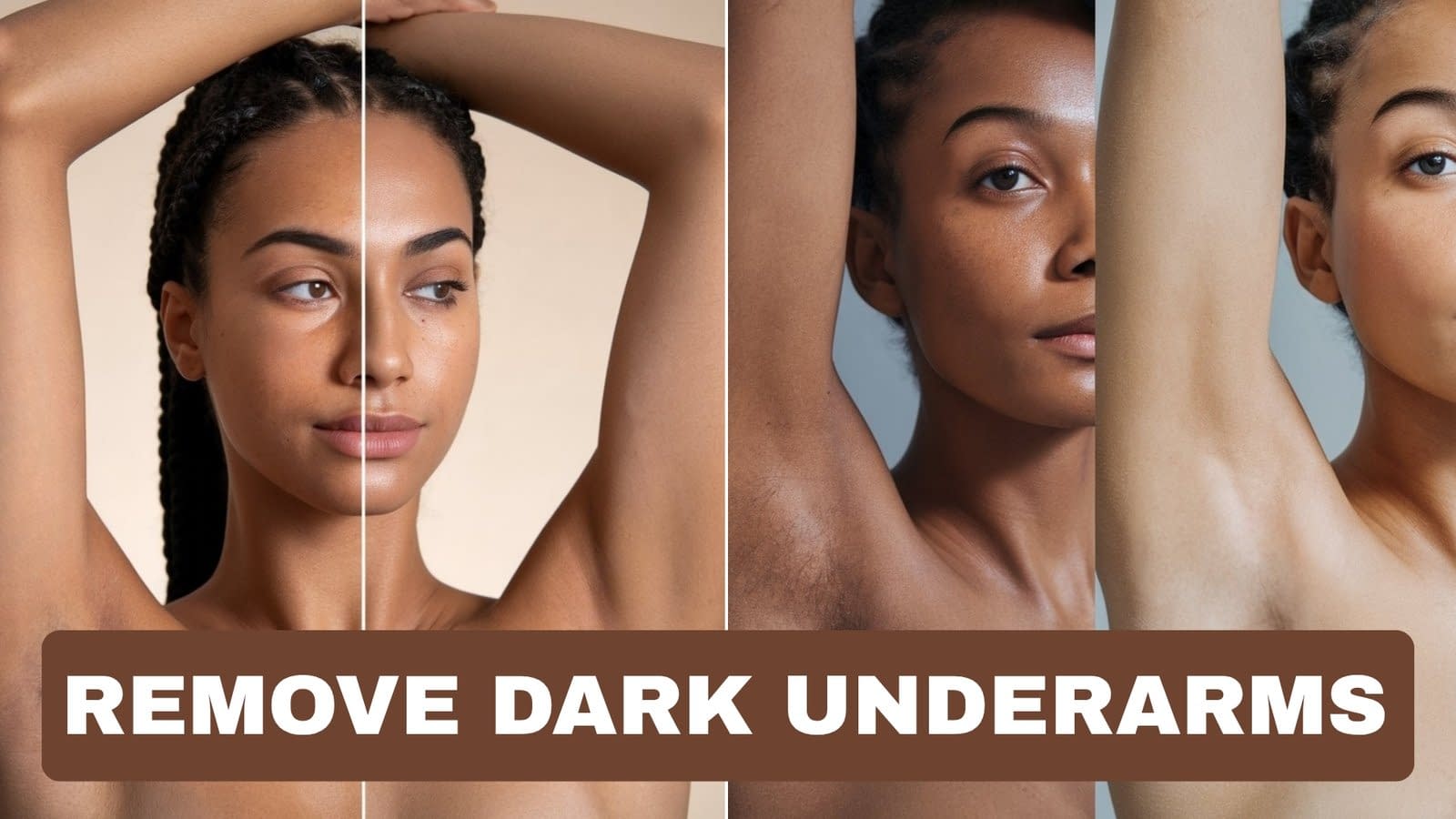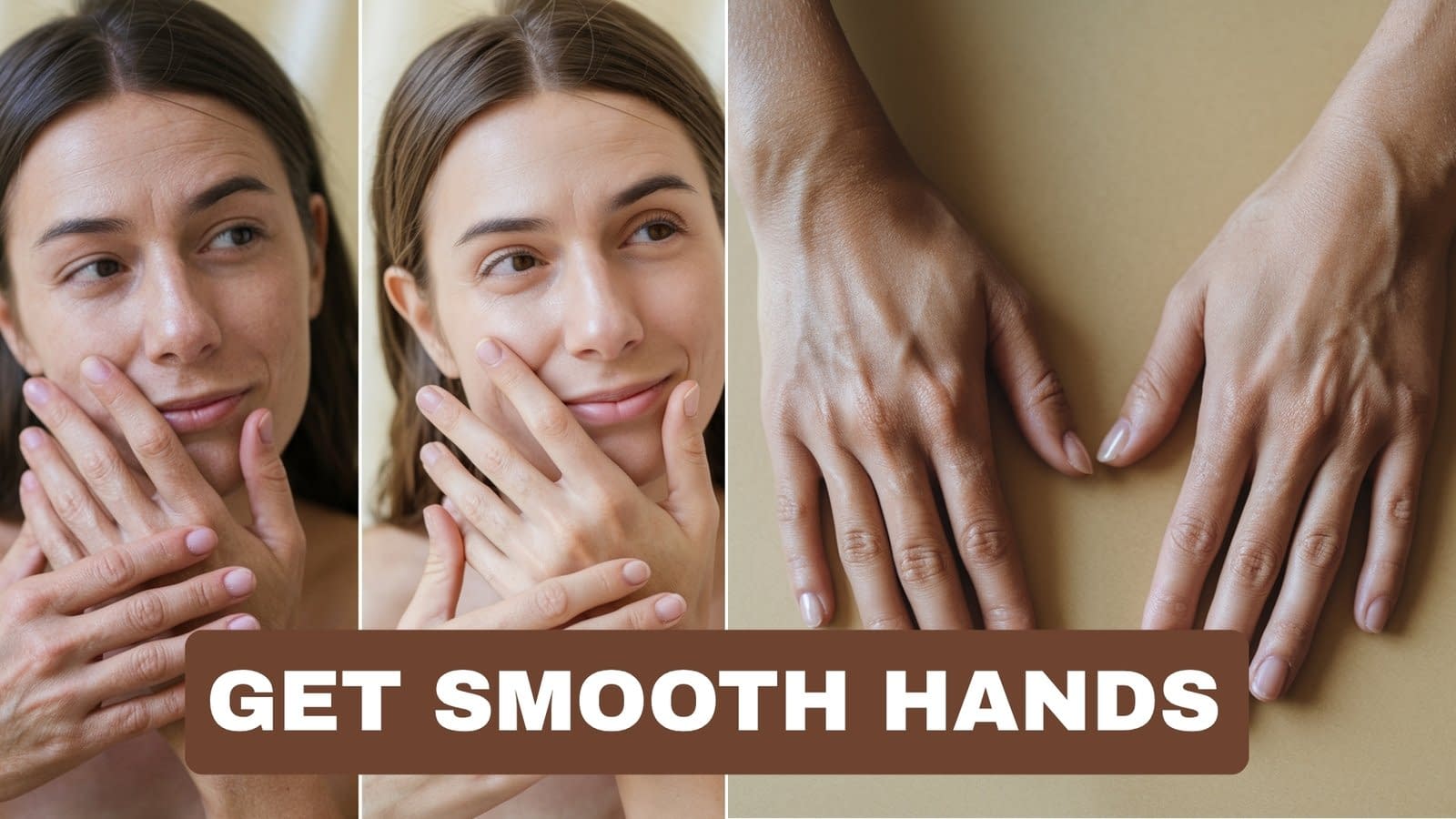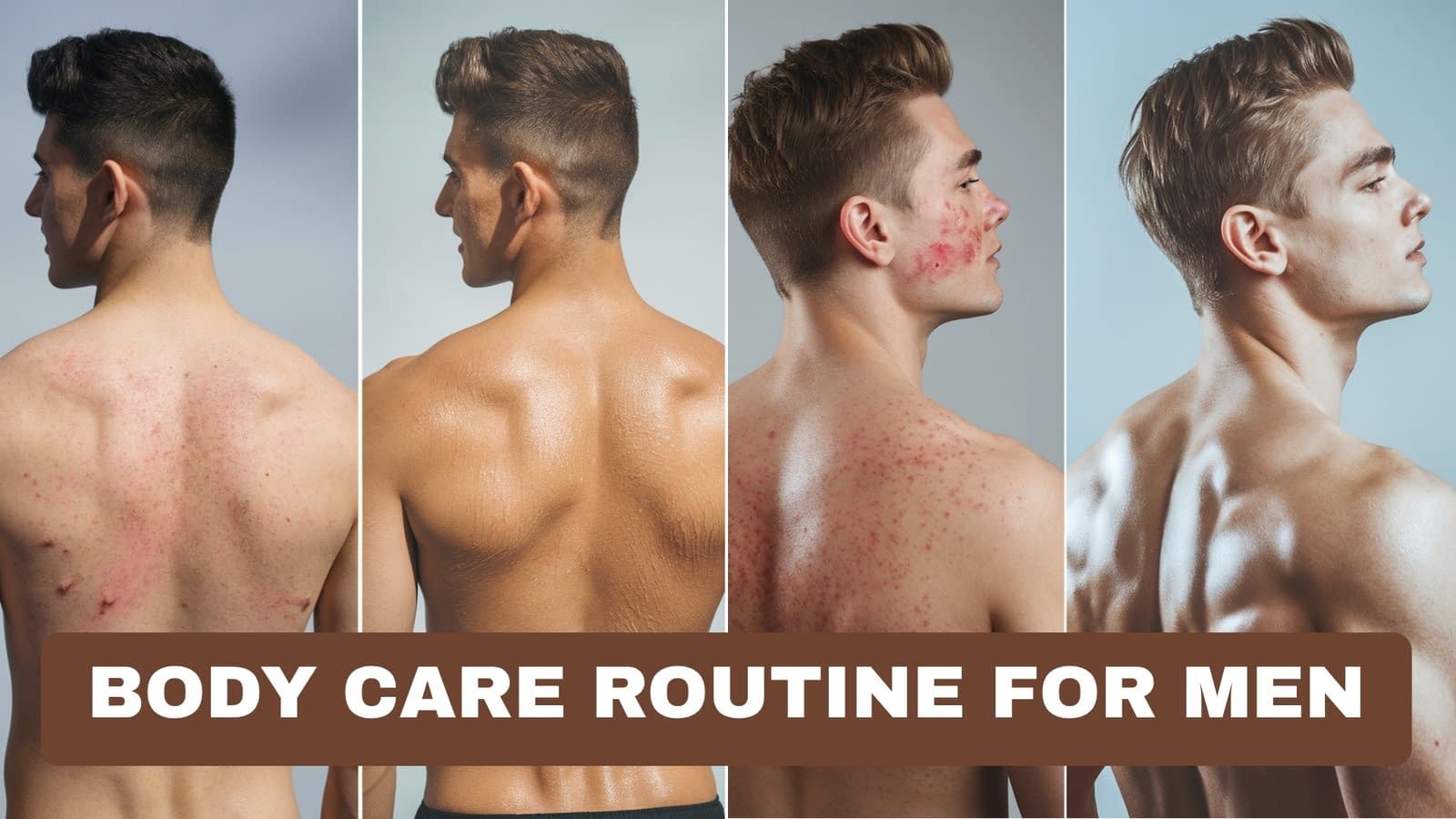Rough elbows, knees and heels are boringly common. They’re not glamorous, they’re not sexy, and they respond well when treated like the hardworking, friction-heavy, low-moisture places they are. This post tells you why they happen, what actually softens them, how to avoid common mistakes, and the exact nightly routine that produces results within weeks.
Why Elbows, Knees, and Heels Get Rough
Understanding the causes: dryness, friction, and neglect
Think of these areas as the body’s shock absorbers. Several things break them down:
- Mechanical stress / friction: Knees and elbows bend, heels rub against shoes and floors. Repeated rubbing thickens the skin (hyperkeratosis) to protect underlying tissue — that’s the hard callus you hate.
- Low oil production: These spots have fewer sebaceous glands than, say, your forehead. Less oil = drier skin that’s more prone to cracking.
- Water loss / barrier damage: If the skin barrier is impaired (harsh soaps, hot showers), water evaporates faster and roughness follows.
- Pressure + footwear: Ill-fitting shoes cause heel calluses; constant kneeling or leaning on elbows causes thickening there.
- Aging & hormones: Collagen and natural lipids decline with age, so maintenance becomes less forgiving.
- Underlying conditions: Eczema, psoriasis, fungal infections, hypothyroidism, diabetes can make roughness worse and harder to fix.
Practical takeaway: reduce friction, restore moisture (lipids + occlusion), and do targeted exfoliation — in that order. If anything smells odd, bleeds, deeply cracks, or won’t improve in 2–4 weeks, read section 8.
Daily Habits That Make Skin Rough
How lifestyle, posture, and clothing affect these areas
Stop punishing your skin. These are the daily things that silently make rough areas worse — and the simple swaps that help.
Habits that worsen roughness (and what to do instead)
- Hot, long showers and harsh soaps. Hot water strips oils. Switch to lukewarm water and a gentle, soap-free or low-suds cleanser. Use shower time to rinse; hydrate after.
- Rubbing vigorously with a towel. Harsh drying removes the last bit of moisture. Pat dry and leave slightly damp before moisturizing (the “towel-off trick,” explained later).
- Kneeling/leaning on elbows without padding. If you garden, clean, or work at a bench, use kneepads or elbow pads. A folded towel under the knee or elbow prevents pressure calluses.
- Wrong shoes or barefoot on rough surfaces. Replace or pad shoes that create hotspots. Avoid walking barefoot on abrasive surfaces for long periods.
- Scrubbing rough skin too often. Over-exfoliation triggers more thickening in a vicious cycle. Limit physical exfoliation to 1–2 times per week maximum.
- Skipping sunscreen on knees/feet. Sun damages all skin — yes, even your knees on summer hikes. Apply SPF 30+ when exposed.
- Tight clothing & fabric friction. Avoid coarse knitwear rubbing the knees and elbows; choose softer fabrics or slip on a soft sleeve when friction is unavoidable.
Daily quick checklist (morning & evening)
- Lukewarm rinse or shower.
- Gently pat dry — leave skin slightly damp.
- Apply a targeted moisturizer/ointment to rough spots (see section 3).
- Wear protective padding if you kneel or lean a lot.
- Inspect heels/shoes monthly and rotate footwear.
Do those five things for 2–4 weeks and your skin will behave better. If not: escalate.
Best Moisturizers for Tough Spots
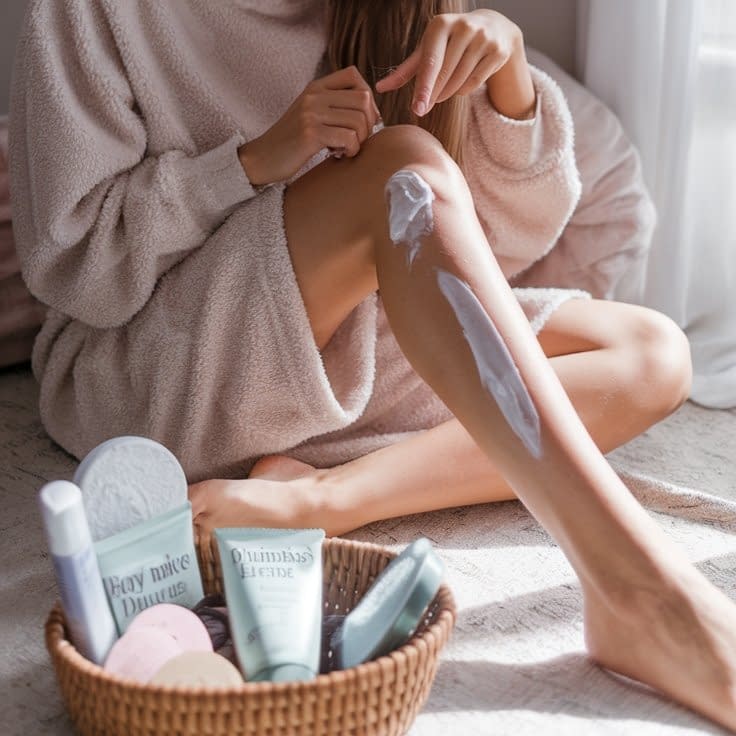
Creams, oils, and balms that really work
Products aren’t magic but the right ingredients are non-negotiable. Build products around three goals: hydrate (humectants), repair barrier (ceramides, fatty acids), and lock it in (occlusives).
Key ingredient groups (what to look for)
- Humectants: glycerin, urea (5–10% for rough feet), hyaluronic acid. They draw water into skin. Urea is especially effective on very rough heels and calluses.
- Barrier builders: ceramides, cholesterol, essential fatty acids — these restore the lipid matrix.
- Occlusives: petrolatum, lanolin, dimethicone — lock moisture in and are indispensable overnight for heels and elbows.
- Keratolytics: urea (10–40% in stronger formulations), lactic acid (5–12%), salicylic acid (0.5–2% OTC) — these soften thickened skin by loosening keratin. Use sparingly and avoid if skin is raw.
- Soothing actives: niacinamide, aloe, allantoin, colloidal oatmeal if skin is irritated.
Product suggestions (types, not brands)
- Daily daytime: lighter cream with glycerin + ceramides (applied to elbows/knees).
- Daily PM (targeted): richer balm/ointment containing petrolatum or lanolin + ceramides.
- For heels & heavy callus: a urea-containing foot cream (10–20% urea) nightly after exfoliation. If you tolerate lactic acid, 5–10% lactic acid creams are great too.
- Occasional keratolytic session: use a 10% urea or 5–10% lactic acid product 2–3× weekly for stubborn thickening, not daily unless tolerated.
How to apply for best results (step-by-step)
- Clean the area with lukewarm water and mild cleanser; pat dry leaving slightly damp.
- If you exfoliate (see next section), do it first and rinse.
- Apply humectant layer (if using hyaluronic or glycerin serum) while slightly damp.
- Apply thicker cream or ointment over the humectant. For heels at night, use a heavy urea-based cream followed by petroleum or thick foot balm to seal.
- Cover (optional): for heels or elbows, wear cotton socks or sleeves overnight to keep product in place and prevent transfer to sheets.
- Repeat morning and night (light cream in AM, richer in PM).
Safety: do not use keratolytics (like higher-percentage salicylic acid) on diabetic feet without medical advice. Patch test new products.
Exfoliation Tips for Smooth Skin
Gentle scrubs, pumice stones, and natural remedies
Exfoliation removes dead skin so moisturizers can reach fresh tissue. Do it right, and calluses shrink. Do it wrong, and you stimulate more thickening.
Two types: physical and chemical — both have their place.
Physical exfoliation (how to use tools safely)
- Tools: pumice stone, foot file (metal or coarse), emery board for small spots, soft washcloth for knees/elbows.
- When to use: after warm water soak or shower when skin is softened. Never on broken or inflamed skin.
- How to use (step-by-step):
- Soak feet/elbows/knees for 5–10 minutes in warm water to soften skin (add 1–2 tbsp baking soda or a little mild soap).
- Gently rub pumice or foot file in circular motions — apply light pressure. Do 2–3 minutes per area. If using a metal file, use short strokes and don’t overdo it.
- Rinse, pat dry leaving slightly damp.
- Immediately apply moisturizer (see section 3).
- Frequency: once weekly to start; reduce to every 10–14 days as skin improves. Over-filed skin thickens in retaliation.
Chemical exfoliation (use with caution)
- Helpful ingredients: lactic acid (gentle AHA), glycolic acid (stronger), salicylic acid (BHA, works especially for thick scales), and urea (keratolytic).
- How to use (step-by-step):
- Start with a low concentration product: lactic acid 5–10% or urea 10%. Use 1–2 times/week first night.
- Rinse if product instructs (some are leave-on).
- Follow immediately with moisturizer and then occlusive at night.
- If tolerated, increase frequency to 2–3× weekly or use a stronger product as needed.
- Safety: avoid using acids and physical exfoliation together in the same session until your skin is tolerant. Don’t use acids on open cracks or infected areas. If you have sensitive skin, stick with urea and low-strength lactic acid.
Natural scrubs — the practical versions
- Oatmeal + honey scrub: 2 tbsp ground oats + 1 tbsp honey + enough water to make a paste. Apply to softened skin, massage gently, rinse. Oatmeal soothes and is mildly exfoliating.
- Sugar scrub (for knees/elbows): 1 tbsp brown sugar + 1 tbsp olive oil, rub gently, rinse. Don’t use sugar on heels where larger particles can get trapped; use pumice instead.
- Baking soda paste: used sparingly (1 tsp baking soda + water) as a quick gentle rub for knees/elbows.
Important: if your skin has deep fissures (cracks), stop scrubbing and focus on moisturization and a medical review.
DIY Treatments for Softening Rough Skin
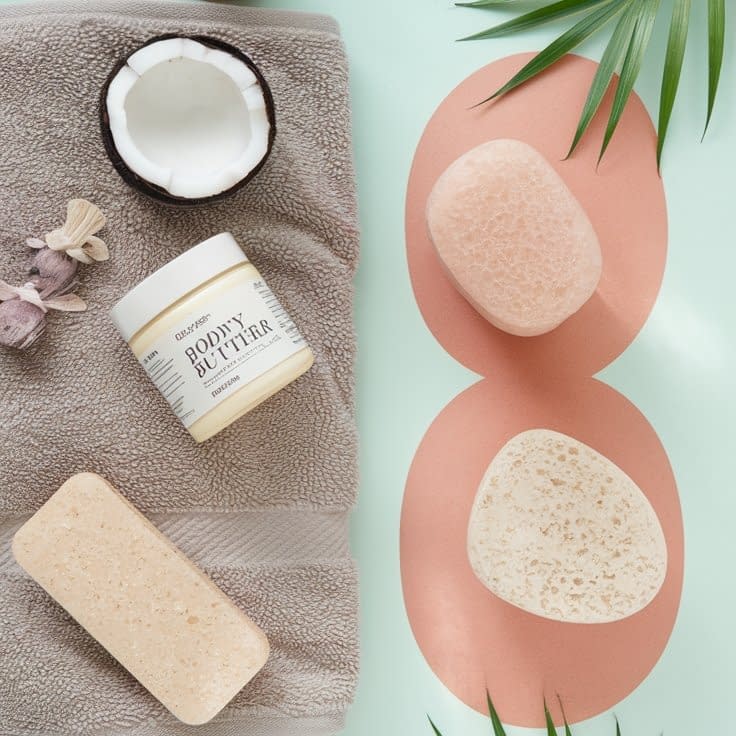
Easy home remedies using common ingredients
DIYs work if you use them sensibly. These recipes are safe, practical, and targeted.
DIY 1 — Overnight heel rescue (u-payoff)
- Ingredients: 2 tbsp urea cream (10% if available) or thick moisturizing cream + 1 tbsp coconut oil (or olive oil) + a few drops tea tree oil (optional for antifungal).
- Method: Warm a small amount in your hands, rub into clean, slightly damp heels. Put on cotton socks and sleep. Repeat nightly for 1–2 weeks, then 2–3× weekly maintenance.
- Why it works: urea softens keratin while occlusion locks in moisture.
DIY 2 — Elbow + knee softening balm
- Ingredients: 2 tbsp shea butter + 1 tbsp coconut oil + 1 tsp beeswax (melt and mix) + 5 drops vitamin E oil.
- Method: Melt beeswax and oils, pour into small jar, let solidify. Apply to elbows/knees after shower and before bed. Use daily.
- Why it works: fatty butters + beeswax provide barrier repair and occlusion.
DIY 3 — Quick weekly soak and pumice routine (15–20 min)
- Ingredients: warm water + 2 tbsp Epsom salt or 1/2 cup apple cider vinegar (optional) in a foot bath.
- Method: Soak 10 min, gently use pumice, rinse, pat damp, apply a thick foot cream and occlude with socks for heels.
- Why it works: softens skin making exfoliation safer and more effective.
DIY 4 — Natural lactic acid boost (yogurt mask)
- Ingredients: plain full-fat yogurt (contains lactic acid) + 1 tsp honey.
- Method: Spread on knees/elbows for 10–15 minutes, rinse. Good once per week if you’re avoiding commercial acids.
- Why it works: gentle chemical exfoliation + hydration.
Safety and patch testing
- Patch test any new DIY on a small inner forearm area for 48 hours. Stop if burning, blistering, or severe redness occurs.
- If you have diabetes, peripheral neuropathy, or circulatory issues, consult a clinician before aggressive exfoliation or keratolytics.
Protective Measures to Keep Skin Soft
Socks, sleeves, and other preventive hacks
Practical prevention beats frantic repair. Use these little physics tricks.
Protection checklist
- Use cushioning: gel heel cups, padded insoles, and cushioned socks reduce pressure and friction.
- Cover contact points: silicone elbow pads for prolonged desk work or gardening knee pads for chores.
- Choose sensible shoes: rotate shoes, pick breathable materials and properly sized footwear. Don’t let heels create hotspots.
- Socks matter: wear cotton or moisture-wicking socks with heavy creams overnight; compressive socks help hold creams in place. Avoid synthetic socks if they irritate your skin.
- Barrier creams for work: if your job exposes knees/elbows to repeated friction (plumbers, cleaners), apply a thin layer of lanolin or barrier cream before tasks. Reapply as needed.
- Protective clothing: when kneeling for extended periods, wear knee pads or a soft pad under jeans; elbows get sleeve padding for manual tasks.
Small habit hacks
- Keep a travel-size balm in your bag and apply after any activity that rubs your knees/elbows (e.g., gardening, cycling).
- Rotate footwear weekly to reduce recurring friction hotspots.
- Slip cotton knee or elbow sleeves under clothes during heavy activity (absorbs friction and protects).
Nighttime Care Routine for Elbows, Knees, and Heels
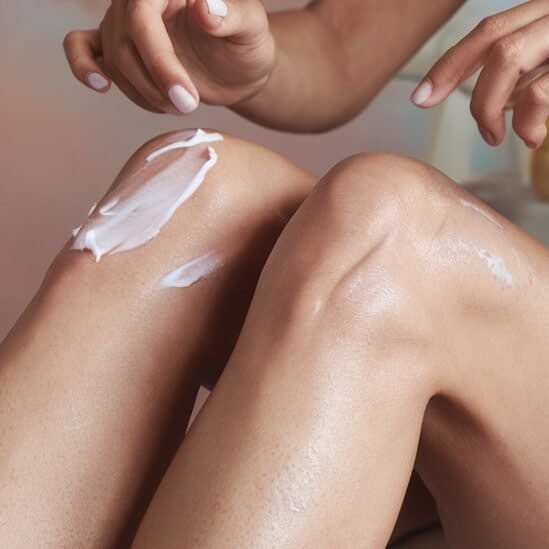
Overnight treatments that deliver results
Nighttime is prime repair time. You can be aggressively restorative because you’re not walking around in shoes or rubbing the area.
16-minute nightly routine (practical)
- Soak/clean (5–8 minutes, optional): quick warm-water rinse or 5-minute soak on very rough heels/knuckles. Pat dry, leave slightly damp.
- Light exfoliation (1–2x weekly only): if scheduled, do gentle pumice or chemical exfoliant on heels or knees (not nightly). Rinse and dry.
- Humectant layer: apply a light glycerin or hyaluronic serum to the still-damp area (thin layer).
- Rich emollient/ointment: apply a thick layer of urea cream (heels) or shea/coconut-based balm (knees, elbows). For extra hold, follow with a thin layer of petrolatum.
- Compression & cover: put on cotton socks for heels or cotton elbow sleeves for elbows/knees. For hands/arms, lightweight gloves can work.
- Sleep: leave overnight. In morning, wash as usual and apply a lighter moisturizer.
Weekly plan (for best results)
- Nightly moisturizing routine above.
- 1–2× weekly keratolytic session with urea or lactic product and gentle exfoliation.
- Monthly deep repair: soak + more extensive file + heavy occlusion for heels.
Why occlusion matters: it stops moisture escape so keratolytics and humectants can work — this is why overnight regimens produce visible improvements in 1–2 weeks.
When to See a Dermatologist
Identifying signs of serious dryness or skin conditions
Most rough skin is treatable at home. See a dermatologist if you experience any of the following:
Red flags (go sooner)
- Cracks that bleed or are extremely painful — risk of infection; needs medical review.
- Signs of infection: increasing redness, warmth, pus, spreading streaks, fever.
- Sudden unexplained changes: rapid hardening, discoloration, lumps under the skin.
- Persistent thick plaques that don’t respond to weeks of proper care (could be psoriasis, lichen simplex chronicus, keratoderma).
- Diabetes or poor circulation with foot skin concerns — urgent evaluation to prevent complications.
- Recurrent fissures despite care — need specialist therapy or prescription keratolytics.
- If topical steroids are needed (for severe eczema), a derm will prescribe the right potency and duration — avoid long-term steroid self-use.
What your dermatologist may offer
- Prescription urea or salicylic formulations at higher concentrations.
- Topical steroid for inflamed chronic eczema or lichenified skin.
- Antifungal or antibacterial treatments for infected or fungal foot conditions.
- In-office debridement of thick callus if necessary, or referrals for orthotics if heel pressure is mechanical.
- Patch tests if contact dermatitis suspected.
Bring this to your appointment: photos of the area, list of products you’ve used, timeline of changes, any systemic symptoms (weight loss, fevers, etc.).
Lifestyle Changes for Long-Term Soft Skin
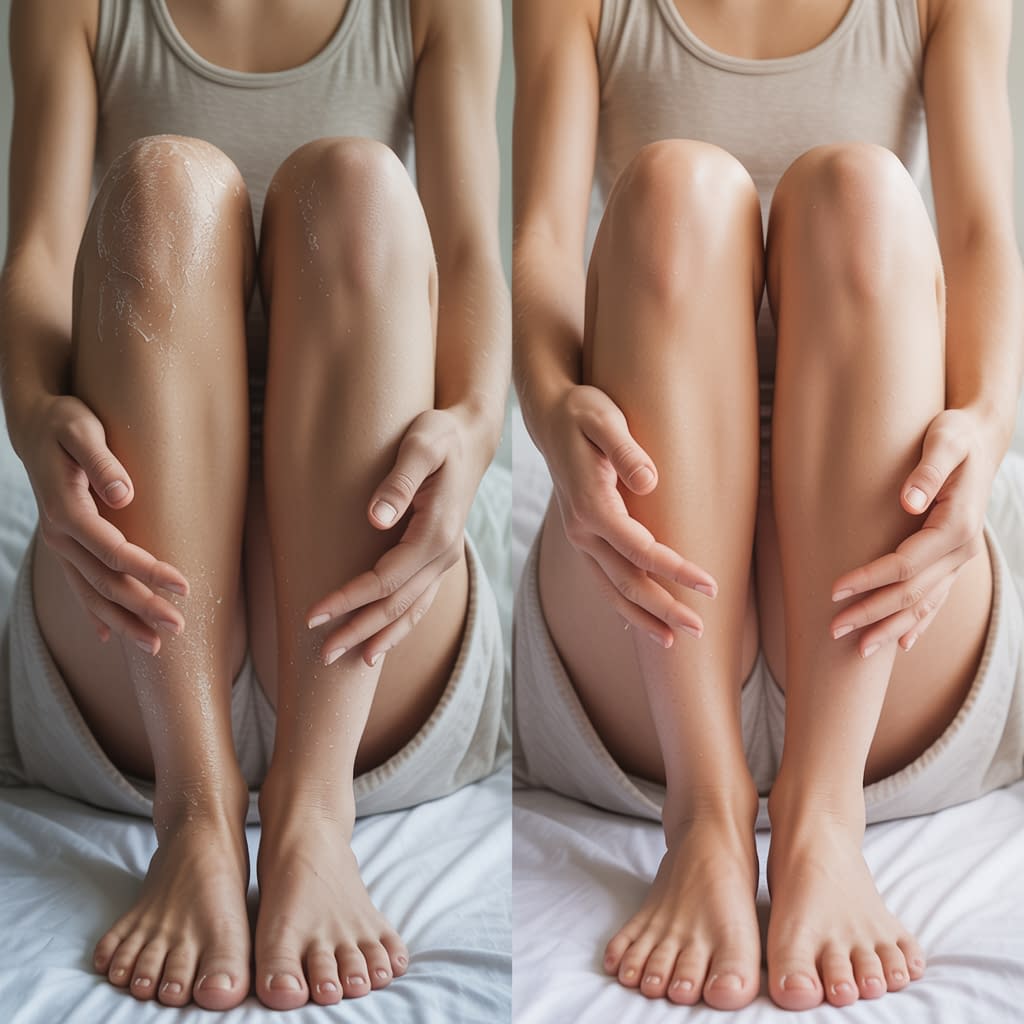
Diet, hydration, and habits that support smooth skin
The best maintenance plan is boring: sensible food, decent sleep, less stress, and smart skin care.
Nutrition & supplements
- Protein intake: collagen synthesis needs amino acids — eat adequate protein (meat, fish, eggs, legumes).
- Vitamin C: crucial for collagen crosslinking — citrus, peppers, berries.
- Zinc & copper: help skin repair — seeds, nuts, shellfish.
- Omega-3 fatty acids: reduce inflammation and improve barrier (fish, flax, chia).
- Stay hydrated: sip water through the day — hydration supports tissue health though it’s not a cure-all.
Lifestyle adjustments
- Quit smoking: smoking destroys collagen and impairs circulation.
- Control blood sugar: high glycation accelerates skin aging — manage carbs and sugar intake.
- Exercise: improves circulation and supports tissue repair.
- Manage chronic friction: if work/hobby causes repeated damage, invest in protective gear or workflow changes.
Mental & behavioral habits
- Regular inspection: check heels and knees weekly and treat early — don’t let thickening escalate.
- Consistency beats intensity: daily barrier support and weekly gentle maintenance are more effective than panicked aggressive treatments.
Final Words
Here’s a compact, zero-nonsense action plan you can follow tonight and every night until your skin stops looking like a chopping board:
- Stop the abuse: switch to lukewarm showers, stop aggressive towel-drying, protect knees/elbows during repetitive tasks, and wear sensible shoes.
- Exfoliate smartly: once-weekly gentle pumice or a low-strength lactic/urea treatment — don’t overdo it.
- Moisturize right: humectant first (glycerin/hyaluronic), then thick cream with ceramides, then occlusive (petrolatum) for night — especially for heels. Use urea (10–20%) for stubborn heel callus.
- Overnight occlusion: thick cream + socks or sleeves for at least three nights a week. This speeds results.
- Protect & prevent: pads, sleeves, better footwear, and routine maintenance — you’ll avoid most relapses.
- See a dermatologist if it’s painful, infected, or nonresponsive after 4–6 weeks of correct care — or immediately if you’re diabetic.
Follow the above and you’ll see measurable improvement in 2–4 weeks and major improvement in 6–12 weeks. Keep doing maintenance and those rough patches won’t come back to haunt you.


